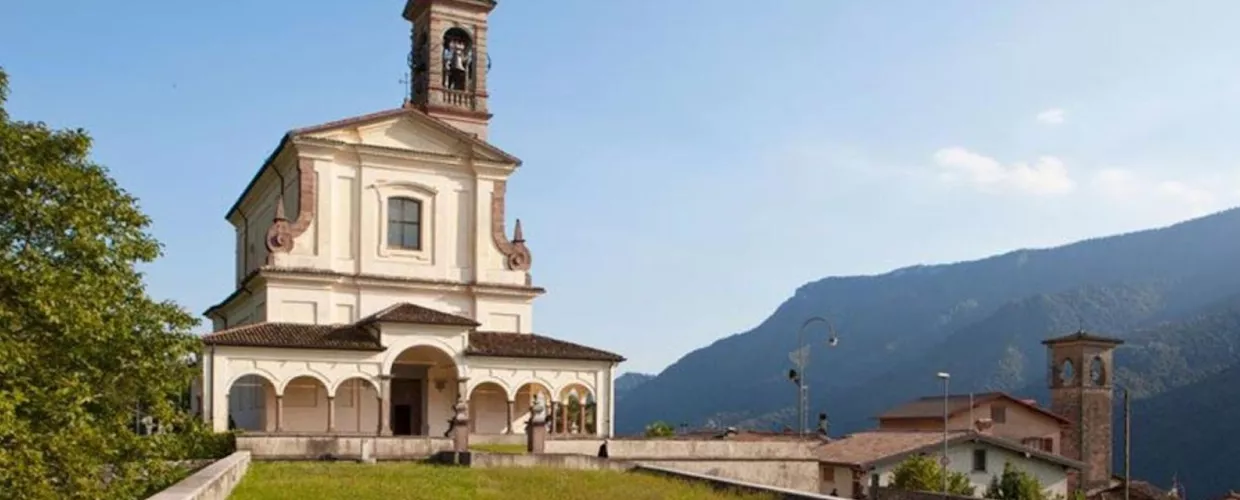
Overview
The Church of Saints Filippo and Giacomo, built on a hill where a medieval castle once stood, dominates the hamlet of Cerete Alto. It was built in the 18th century AD to a plan by Rovetta sculptor Andrea Fantoni, the latter's first experience as an architect.
To build it, materials were taken from the old parish house that had been destroyed; the Marinoni Chapel is the only part that still remains.
Inside we can find a Madonna created by the Fantoni workshop, wearing a dress made and donated by the inhabitants of Cerete as an ex-voto.
The main altar, also by Fantoni, is made from black Gazzaniga marble, with white Carrara marble inserts and floral decorations using multicoloured marble.
Just down the hill is the Marinoni Chapel, built between 1503 and 1512, the official symbol of the beginning of the Renaissance in the Bergamo area. It housed three separate resting places for women, children and men, intended for members of the aristocratic family from which the chapel takes its name, whose coat of arms is still visible on the frame of the entrance.
The exterior has a gabled façade with a large main door flanked by two windows, which allowed passers-by to stop and pray even when the church was closed, as was local tradition in the 15th and 16th centuries.
Both the exterior and the interior are frescoed with images of religious iconography, which took the place of scripture in the past due to widespread illiteracy.
The Church of S. Vincenzo Martire in Cerete Basso is very old: it is believed to have been built before the year 1000 and consecrated between 1444 and 1575.
The façade, which is light yellow, simple and linear, conceals the artistic splendour of the interior, where six chapels take pride of place. The chapels contain works of great artistic value, such as a wooden Crucifix from the Fantoni workshop, an altarpiece by Domenico Carpinoni, and a multicoloured marble altar by Corbarelli, decorated with statues from the Fantoni workshop and three large canvases by Antonio Cifrondi.
Visitors in search of something truly unique should visit the esoteric crypt, a small space that is the funerary chapel of Don Stefano Perinei, killed for disobeying the Bishop of Bergamo, who had ordered him to destroy the pagan-themed stuccoes that covered the vault.
24020 Cerete BG, Italia